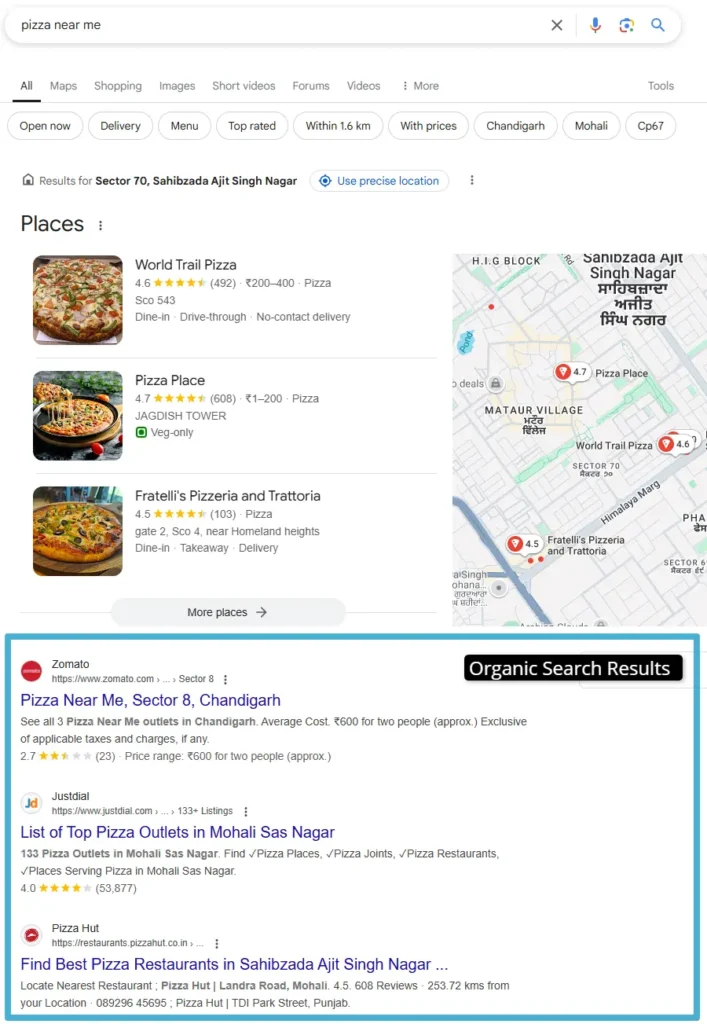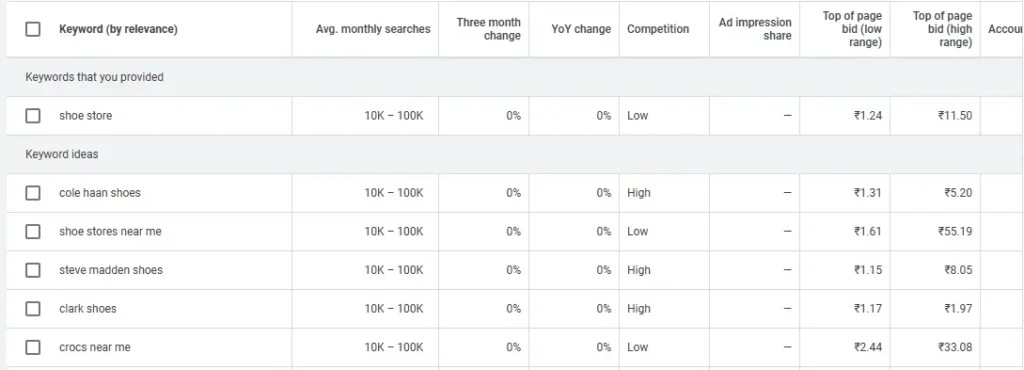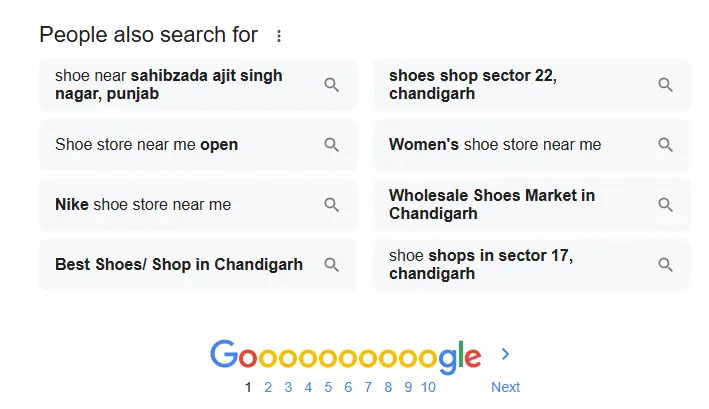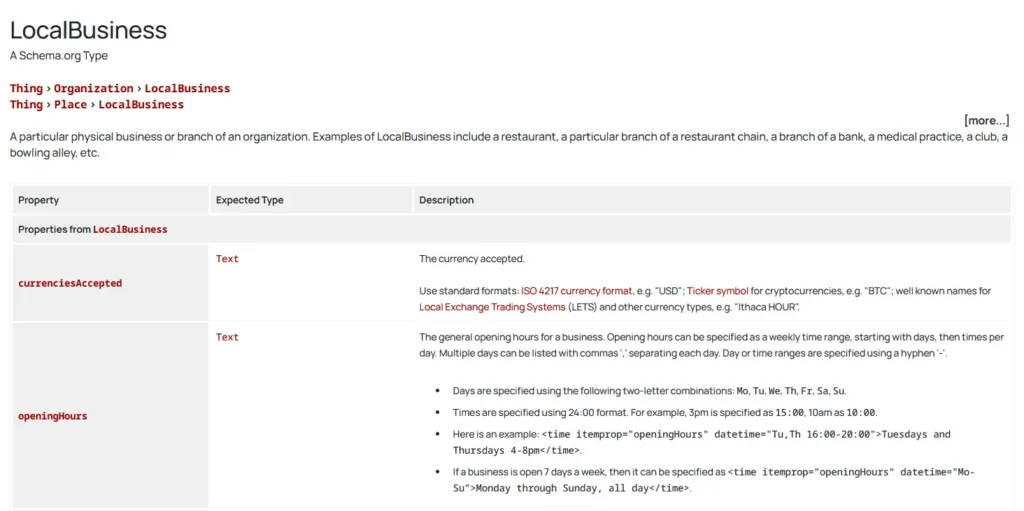The Ultimate Guide to Local SEO for Local Business Success
In today’s digital landscape, ‘near me’ searches have skyrocketed. Whether someone’s looking for the best pizza in town, a reliable plumber, or a cosy coffee shop, local search is the lifeline connecting businesses with nearby customers.
But how do you ensure your business pops up when those crucial searches happen? That’s where Local SEO comes in. It’s not just about having a website, it’s about making your business visible to the people who matter most: your local community.
Our comprehensive guide covers all actionable Local SEO strategies you can implement right now to improve your rankings in local search results and attract more local customers to your business today – let’s get started!
What Is Local SEO?
Local SEO, or Local Search Engine Optimization, is the practice of optimizing your online presence to be found by people searching for businesses or services in your local area.
It’s about making sure you show up when people search for things like “best pizza near me,” “plumber in [your city],” or “hair salon open now.” Optimizing your local SEO greatly benefits local service providers and businesses with physical stores.
The Google Local Pack, also known as the Map Pack or Snack Pack, is a prominent SERP feature that displays the top three local business listings relevant to a user’s search query with local intent, typically appearing above organic search results.


Local SEO helps your Google Business Profile rank higher in Search as well as local pack. While search results are personalized based on the user’s country, Local SEO targets people in more specific locations, such as cities and districts.
Why Is Local SEO Important?
In today’s digital age, consumers rely heavily on online searches to find businesses. Local SEO is crucial because:
- Increased Visibility: It helps your business appear higher in search engine results pages (SERPs) for local searches.
- Targeted Traffic: You attract customers who are actively looking for businesses like yours in your specific area.
- Enhanced Brand Reputation: Positive online reviews and local citations build trust and credibility with potential customers.
- Competitive Advantage: By optimizing your local SEO, you gain an edge over your competitors who may not have a strong online presence in your area.
How Google Determines Local Ranking
Google has explained the factors they use to determine local ranking. Google says “Local results are based primarily on relevance, distance, and prominence. A combination of these factors helps us find the best match for your search.
For example, our algorithms might decide that a business that’s farther away from your location is more likely to have what you’re looking for than a business that’s closer, and therefore rank it higher in local results.”
Google has defined these terms as:
- Relevance – Relevance refers to how well a local Business Profile matches what someone is searching for. Add complete and detailed business information to help Google better understand your business and match your profile to relevant searches.
- Distance – Distance considers how far each potential search result is from the location term used in a search. If a user doesn’t specify a location in their search, we’ll calculate distance based on what we do know about their location.
Prominence – Prominence refers to how well-known a business is. Some places are more prominent in the offline world, and search results try to reflect this in local ranking.
For example, famous museums, landmark hotels, or well-known store brands are also likely to be prominent in local search results.
Prominence is also based on information that Google has about a business, from across the web, like links, articles, and directories. Google review count and review score factor into local search ranking.
More reviews and positive ratings can improve your business’ local ranking. Your position in web results is also a factor, so search engine optimization (SEO) best practices apply.
Elements of Local SEO
Local SEO is a strategic process that involves understanding various elements to achieve optimal results. Let’s delve into the core components that contribute to your local SEO ranking.
1. Google My Business (GMB) Profile
Google My Business is a free tool that allows you to manage your business’s online presence across Google. Think of it as your online storefront, the first impression potential customers get of your business on Google.
A well-optimized GMB profile can significantly boost your visibility in local search results, drive foot traffic, and build trust with potential customers. GMB helps you:
- Control your business information: Ensure your name, address, phone number (NAP) is accurate and consistent across Google.
- Manage your online presence: Respond to customer reviews, post photos and videos, and share updates with your customers.
- Track your performance: See how customers find your business on Google and track your website visits and calls.
- Engage with customers: Answer customer questions directly on your GMB profile.
Here’s how GMB is important for Local SEO:
- Local Search Visibility: A complete and optimized GMB profile is a major ranking factor in local search results. When someone searches for businesses near them, Google prioritizes businesses with well-managed GMB profiles.
- Increased Customer Engagement: GMB provides a platform for you to interact with potential and existing customers. You can answer questions, address concerns, and build relationships.
- Enhanced Brand Reputation: Positive reviews and customer interactions on your GMB profile can significantly enhance your brand reputation and build trust.
- Free Marketing Tool: GMB offers a range of free marketing tools, such as Google Posts, which allow you to showcase special offers, events, and updates.
To make the most of your GMB profile:
- Claim and Verify Your Profile: Ensure your business information is accurate and up-to-date. Make sure that your name, address, phone number (NAP) is accurate and consistent across Google. Your NAP data in GMB should match the NAP data in citations around the web.
- Complete Your Profile: Fill in all relevant sections, including business description, website, services, and hours of operation – ‘openness’ is confirmed by Google as a local ranking factor. The Openness ranking signal evaluates whether a business is open at the time of a search.
- Add High-Quality Photos and Videos: Use professional photos of your business, products, and team. Add videos to showcase your services and atmosphere.
- Encourage Customer Reviews: Ask satisfied customers to leave reviews on your GMB profile. Respond to all reviews, both positive and negative.
- Post Regularly: Share updates, special offers, and events using Google Posts.
- Monitor Your Analytics: Track your GMB performance to see how customers find your business and identify areas for improvement.
2. Local Citations
A local citation is any online mention of your business’s Name, Address, and Phone number (NAP) that help search engines verify your legitimacy and location. These mentions can appear on various platforms, including:
- Online Directories: Yelp, Yellow Pages, TripAdvisor, etc.
- Industry-Specific Directories: For example, legal directories for law firms or medical directories for doctors.
- Social Media Platforms: Facebook, LinkedIn, etc.
- Local Chamber of Commerce Websites: And other local community websites.
- Data Aggregators: Companies that collect and distribute business information to other platforms.
- Build Trust and Authority: Consistent citations across reputable platforms signal to search engines that your business is legitimate and trustworthy.
- Improve Local Search Rankings: Search engines consider citations as a ranking factor in local search results. Accurate and consistent citations can help your business rank higher.
- Increase Visibility: Citations help potential customers find your business, especially if they are searching on platforms other than Google.
- Drive Traffic: Citations often include links to your website, which can drive traffic and improve your overall SEO.
Key Factors for Effective Local Citations:
- Consistency: The most important factor is consistency. Ensure your NAP information is identical across all platforms. Inconsistencies can confuse search engines and harm your rankings.
- Accuracy: Double-check your information for accuracy. Even small errors can negatively impact your local SEO.
- Relevance: Focus on building citations on relevant and reputable platforms. For example, a restaurant should prioritize citations on food-related directories.
- Authority: Aim for citations on high-authority websites. Citations from well-known platforms carry more weight.
- Identify Key Directories: Research and identify the most relevant directories for your industry and location.
- Claim and Optimize Profiles: Claim your business profiles on these directories and ensure they are complete and accurate.
- Identify Competitor Citations: Identify your key competitors based on factors like proximity, services offered, and target audience and use citation tools like BrightLocal, SEMrush, Localo and JustDial or manually search for your competitors on popular directories like Google My Business, Yelp, Yellow Pages, etc.
- Use Data Aggregators: Consider using data aggregators to distribute your business information to a wide range of platforms.
- Monitor Your Citations: Regularly check your citations for accuracy and consistency. Use tools to track your citations and identify any errors.
- Fix Inconsistencies: If you find any inconsistencies, correct them immediately.
3. On-Page Optimization
On-page optimization involves optimizing various elements of your website to improve its visibility in search engine results pages (SERPs).
This includes optimizing your website’s content, HTML code, and user experience. On-page optimization ensures your website is search engine-friendly and provides a seamless experience for local customers.
Here’s why On-Page Optimization is crucial for Local SEO?
- Relevance: It helps search engines understand the relevance of your website to local searches.
- User Experience: A well-optimized website provides a positive user experience, encouraging visitors to stay and engage.
- Ranking Signals: Search engines consider on-page factors when determining your website’s ranking in local search results.
- Conversions: Optimizing your website for conversions can lead to more leads, sales, and appointments.
Keyword Research
Keyword research is the process of identifying and analyzing the search terms (keywords) that your target audience uses when looking for products or services in your local area. This involves finding relevant keywords with high search volume and low competition.
Keywords are the bridge connecting your business with potential local customers. Understanding what terms people use when searching for businesses like yours is crucial for optimizing your online presence.
Here’s why Keyword Research is crucial for On-Page optimization and Local SEO:
- Targeted Traffic: Using the right keywords helps you attract customers who are actively searching for your offerings.
- Improved Visibility: Optimizing your website and content with relevant keywords improves your ranking in local search results.
- Understanding Customer Intent: Keyword research reveals the specific needs and interests of your target audience.
- Content Strategy: It guides your content creation efforts, ensuring you produce valuable and relevant content for your local audience.
Key Steps for Local Keyword Research:
Brainstorming and Seed Keywords:
- Start by brainstorming a list of keywords related to your business, products, and services.
- Consider the terms your customers might use when searching for businesses like yours.
Google My Business Insights:
- Analyze the search terms that people use to find your GMB profile.
- This provides valuable insights into the keywords your target audience is already using.
Google Keyword Planner:
- Use Google Keyword Planner to discover new keyword ideas and analyze search volume and competition.
- Filter your results by location to focus on local keywords.

Google Autocomplete and Related Searches:
- Type your seed keywords into Google and observe the autocomplete suggestions.

- Explore the “related searches” section at the bottom of the SERPs for additional keyword ideas.

Competitor Keyword Analysis:
- Analyze your competitors’ websites and content to identify the keywords they are targeting.
- Use tools to see what keywords they are ranking for.
Long-Tail Keywords:
- Focus on long-tail keywords, which are longer and more specific phrases.
- Long-tail keywords often have lower competition and higher conversion rates.
Location-Based Keywords:
- Incorporate your city and region into your keywords.
- For example, “best pizza [city],” “plumber near [region].”
Question-Based Keywords:
- Identify common questions that your target audience asks and use them as keywords.
- For example, “where to find [product] in [city]?”
Local Voice Searches:
- Voice search is reshaping how people find local businesses. According to PWC, 71% of consumers prefer to conduct queries by voice instead of typing.
- Voice searches are typically more conversational and natural than typed searches. Voice searches often involve longer, more specific phrases, making long-tail keywords even more critical.
- To optimize for local voice searches, focus on Long-Tail keywords: conversational phrases that people are likely to say. Answer common questions and optimize for “Near Me” searches. Implement Schema Markup and optimize your site for mobile devices.
- Google Keyword Planner
- Google Trends
- Semrush
- Ahrefs
- Moz Keyword Explorer
Location-Based Content
- Create content that highlights your location and target audience.
- Include your city and region in your website’s title tags, meta descriptions, headings, and body content.
- Create location-specific landing pages.
NAP Consistency
- Ensure your Name, Address, and Phone number (NAP) information is consistent across your website.
- Use schema markup to help search engines understand your NAP information.
Mobile Optimization
- Make sure your website is mobile-friendly. A significant portion of local searches occur on mobile devices.
- Use a responsive design that adapts to different screen sizes.
Page Speed Optimization
- Improve PageSpeed: Ensure your website loads quickly. A slow website can frustrate users and negatively impact your rankings.
- Compress images, minify CSS and JavaScript, and use a content delivery network (CDN).
Schema Markup
- Implement schema markup to provide search engines with structured data about your business.
- Use local business schema to highlight your NAP, hours of operation, and other relevant information.

Focus on creating high-quality content. Create informative and engaging content that provides value to your local audience. Focus on answering common questions and addressing local concerns.
Use internal links to connect relevant pages on your website. This helps search engines understand your website’s structure and improve navigation.
4. Off-Page Optimization
Off-page optimization encompasses various strategies that demonstrate your website’s credibility and relevance to search engines. These strategies primarily involve building backlinks and generating positive online mentions.
Here’s why Off-Page Optimization is important for Local SEO:
- Builds Trust and Authority: High-quality backlinks and positive mentions signal to search engines that your business is trustworthy and reputable.
- Improves Local Rankings: Off-page signals are a significant ranking factor in local search results.
- Increases Visibility: Off-page optimization helps your business gain visibility on various online platforms.
- Drives Referral Traffic: Backlinks from relevant websites can drive referral traffic to your website.
Let’s delve into the key Off-Page Optimization Strategies for Local SEO:
Backlink Building
- Focus on building high-quality backlinks from relevant and authoritative websites.
- Prioritize local backlinks from local directories, news websites, and community websites.
- Engage in guest blogging on relevant local websites.
- Participate in local events and seek sponsorships that can lead to backlinks.
Social Media Engagement
- Maintain an active presence on relevant social media platforms.
- Engage with your local audience and share valuable content.
- Social signals can indirectly influence local SEO.
Public Relations and Outreach
- Seek opportunities to get your business mentioned in local news articles and publications.
- Build relationships with local influencers and bloggers.
Community Involvement
- Participate in local community events and initiatives.
- Sponsor local events and organizations.
- Community involvement builds brand awareness and generates positive mentions.
Focus on building high-quality backlinks from reputable websites rather than acquiring a large number of low-quality backlinks. Ensure your backlinks and mentions are relevant to your business and location. Avoid engaging in black hat SEO tactics, such as buying backlinks.
5. Online Reviews
The Power of Online Reviews : Before trying a new restaurant or hiring a local service, most people check online reviews. Positive reviews build trust, while negative ones can deter potential customers. Reviews significantly influence potential customers’ decisions and play a crucial role in your local SEO success.
Here’s why Online Reviews are important for Local SEO:
- Build Trust and Credibility: Positive reviews act as social proof, assuring potential customers that your business is reliable and trustworthy.
- Influence Local Rankings: Search engines consider reviews as a ranking factor in local search results.
- Drive Customer Decisions: Reviews significantly impact customer purchasing decisions.
- Provide Valuable Feedback: Reviews offer insights into your customer experience, helping you identify areas for improvement.
- Increase Click-Through Rates: Businesses with higher ratings and more reviews tend to have higher click-through rates in local search results.
- Google My Business (GMB): Google reviews are highly visible and directly impact your local SEO.
- Yelp: Yelp is a popular platform for local business reviews, especially for restaurants and service-based businesses.
- Facebook: Facebook reviews can influence potential customers’ decisions, particularly for businesses with a strong social media presence.
- Industry-Specific Platforms: Depending on your industry, there may be specific review platforms that are important to monitor.
Best Practices of Online Reviews management:
Encourage Reviews:
- Ask satisfied customers to leave reviews on your GMB profile and other relevant platforms.
- Make it easy for customers to leave reviews by providing direct links.
- Consider offering incentives, such as discounts or loyalty points, for leaving reviews.
Respond to All Reviews:
- Respond to all reviews, both positive and negative, promptly and professionally.
- Acknowledge positive feedback and address any concerns raised in negative reviews.
- Demonstrate your commitment to customer satisfaction.
Monitor Your Reviews:
- Regularly monitor your reviews across all platforms.
- Use tools to track your reviews and identify any trends or patterns.
Address Negative Reviews Constructively:
- Avoid getting defensive or argumentative.
- Acknowledge the customer’s concerns and offer a solution.
- Take the conversation offline if necessary.
Showcase Positive Reviews:
- Feature positive reviews on your website and social media channels.
- Use testimonials to highlight your customer satisfaction.
6. Local Partnerships
Think of local partnerships as a synergistic relationship where both businesses benefit from each other’s strengths and networks. It’s about creating a win-win scenario that elevates your brand and benefits your local community.
Building strategic partnerships with other local businesses can expand your reach, boost your visibility, and enhance your overall SEO efforts.
Here’s why Local Partnerships are important for Local SEO:
- Expanded Reach: Partnering with complementary businesses can expose your brand to a wider audience.
- Increased Visibility: Cross-promotion and joint marketing efforts can boost your online visibility.
- Enhanced Credibility: Collaborating with reputable local businesses can enhance your brand’s credibility.
- Backlink Opportunities: Partnerships can lead to valuable backlinks from relevant local websites.
- Community Engagement: Partnering with local organizations demonstrates your commitment to the community.
Types of Local Partnerships:
- Complementary Businesses: Partnering with businesses that offer complementary products or services (e.g., a coffee shop partnering with a bakery).
- Local Events and Organizations: Sponsoring or participating in local events, charities, and community organizations.
- Influencer Collaborations: Partnering with local influencers or bloggers to promote your business.
- Joint Marketing Campaigns: Collaborating on joint marketing campaigns, such as contests, giveaways, or promotions.
- Referral Programs: Establishing referral programs with other local businesses.
Strategies for Building Local Partnerships:
Identify Potential Partners:
- Identify businesses that share your target audience and values.
- Consider businesses that offer complementary products or services.
Build Relationships:
- Attend local networking events and community gatherings.
- Reach out to potential partners and introduce your business.
Offer Value:
- Clearly articulate the benefits of partnering with your business.
- Offer to cross-promote their business on your website and social media channels.
Create Joint Marketing Campaigns:
- Collaborate on joint marketing campaigns that benefit both businesses.
- Consider hosting joint events or workshops.
Establish Referral Programs:
- Create a referral program that incentivizes customers to refer your business.
- Partner with other local businesses to cross-promote each other’s services.
Measure and Track Results:
- Track the results of your partnerships to measure their effectiveness.
- Analyze website traffic, social media engagement, and customer referrals.
Conquering Local SEO for Multi-Location Businesses
If you run a business with multiple locations, your local SEO strategy needs to be more sophisticated than a single-location business. You need to ensure that each location is optimized for local search and that you’re effectively managing your online presence across all locations.
Here are some best practices to follow:
1. Google My Business (GMB):
- Create and Verify Each Location: Ensure each location has its own dedicated GMB profile.
- Optimize Each Profile: Fill out all sections completely (business description, photos, hours, services, etc.)
- Add high-quality photos and videos.
- Respond to customer reviews promptly.
- Regularly post updates and special offers.
- Manage Location Groups: If you have a large number of locations, utilize GMB location groups to manage them more efficiently.
2. Consistent NAP (Name, Address, Phone Number) Across All Platforms:
- Maintain Absolute Consistency: Ensure your NAP information is identical across all online platforms (website, citations, directories, GMB profiles).
- Use Schema Markup: Implement schema markup on your website to clearly define your location information for search engines.
3. Location-Specific On-Page Optimization:
- Create Location Pages: Develop dedicated landing pages for each location on your website.
- Optimize Content: Include location-specific keywords in your website content, meta descriptions, and title tags.
- Use Location-Based Content: Create content that is relevant to each specific location, such as blog posts about local events or partnerships.
4. Local Citations:
- Claim and Optimize Citations: Claim and optimize your business citations on local directories (Yelp, Yellow Pages, etc.) for each location.
- Use Citation Tools: Utilize citation tools to help manage and track your citations across multiple platforms.
5. Local Partnerships and Community Engagement:
- Build Local Partnerships: Collaborate with other local businesses and community organizations at each location.
- Sponsor Local Events: Participate in and sponsor local events to increase brand visibility and community engagement.
6. Monitor and Analyze:
- Track Local Search Rankings: Use local SEO tracking tools to monitor your rankings for location-specific keywords.
- Analyze Customer Reviews: Regularly analyze customer reviews to identify areas for improvement.
- Adjust Your Strategy: Continuously review and adjust your local SEO strategy based on your performance and the competitive landscape.
7. Consider a Multi-Location SEO Platform:
- If you have many locations, consider investing in a multi-location SEO platform like BrightLocal, Moz Local, Semrush and Yext to streamline your management process. These tools can help you manage your GMB profiles, track citations, and analyze your performance across all locations.
The Map Pack
The Map Pack is a section on Google’s search results page that displays a map with the top three local businesses relevant to your search query.
It includes essential information like business name, address, phone number, ratings, and a link to the business’s website. Securing a spot here can significantly boost your local visibility and drive more customers to your door.
Google assesses the user’s search intent and shows local results and the map pack even if there’s no location mentioned in the keyword.
Here’s why the Map Pack is important for Local SEO:
- High Visibility: The Map Pack appears at the top of the search results, making it highly visible to searchers.
- Increased Traffic: Businesses that appear in the Map Pack receive a significant increase in website traffic and foot traffic.
- Enhanced Credibility: Appearing in the Map Pack signals to searchers that your business is reputable and trustworthy.
- Mobile Optimization: The Map Pack is particularly important for mobile searches, as it provides quick and easy access to business information.
Google My Business (GMB) Optimization:
- A complete and optimized GMB profile is the most crucial factor.
- Ensure your business information is accurate and up-to-date.
- Add high-quality photos and videos.
- Respond to customer reviews promptly.
- Use Google Posts.
NAP Consistency:
- Maintain consistent Name, Address, and Phone number (NAP) information across all online platforms.
Reviews:
- Positive reviews and a high average rating can significantly improve your Map Pack rankings.
- Encourage customers to leave reviews on your GMB profile.
Proximity:
- Google prioritizes businesses that are physically close to the searcher’s location.
Website Optimization:
- Ensure your website is mobile-friendly and loads quickly.
- Optimize your website content with relevant local keywords.
Citations:
- Accurate and consistent citations on reputable online directories can improve your Map Pack rankings.
Conclusion
I want to conclude by thanking you for reading the post. As we’ve explored in this comprehensive guide, the landscape of Local SEO is constantly evolving. Businesses that proactively adapt to these trends will be the ones that thrive in the competitive local marketplace.
The core principles of Local SEO, however, will remain: providing exceptional value to your community, building trust through consistent online presence, and cultivating genuine customer relationships.
While the tools and tactics may shift, the fundamental goal remains the same: connecting with local customers at the moment they need you. Local SEO in 2025 is about more than just rankings, it is about building meaningful connections with your community.
Stay adaptable, stay engaged, and stay focused on delivering value to your local audience. The future of local search is bright, and with the right strategies, your business can shine.
We’re here to support you on your SEO journey – feel free to reach out with any questions!

